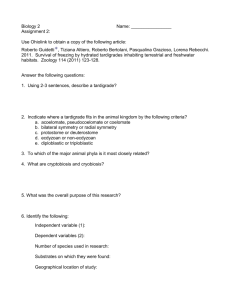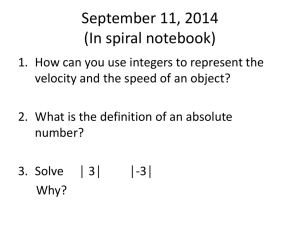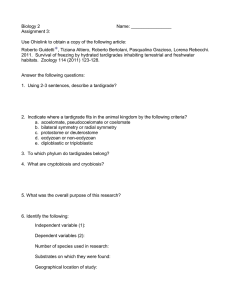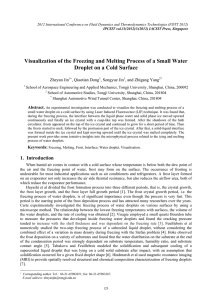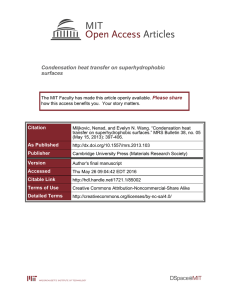Liquid Freezing Dynamics on Hydrophobic and Superhydrophobic Surfaces Please share
advertisement
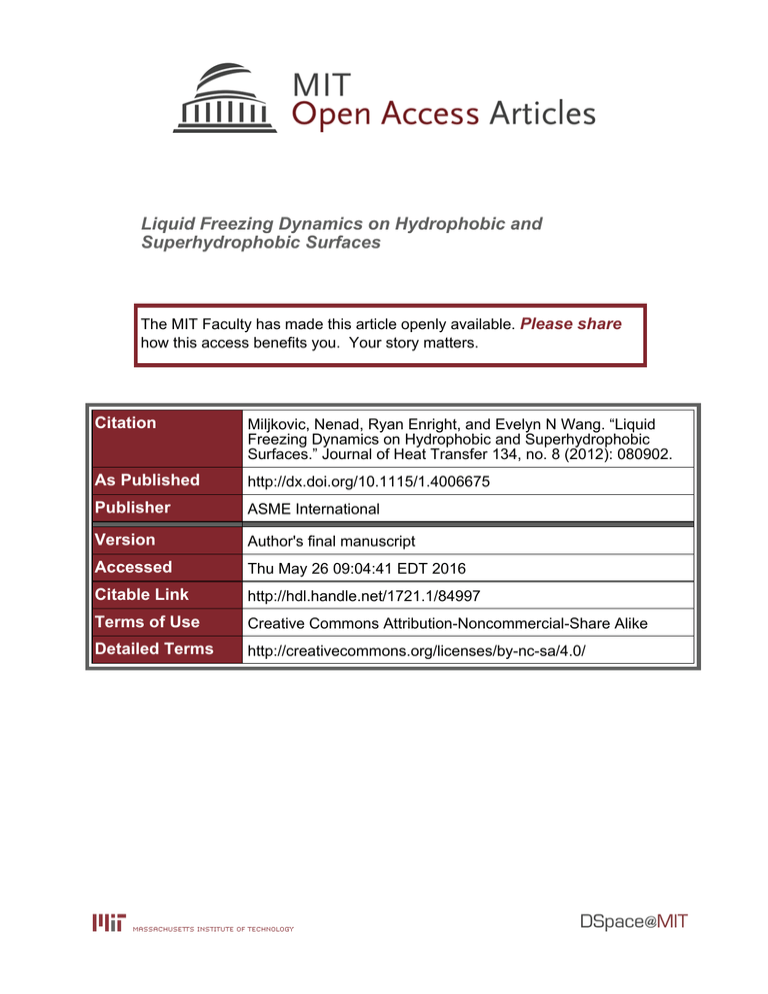
Liquid Freezing Dynamics on Hydrophobic and Superhydrophobic Surfaces The MIT Faculty has made this article openly available. Please share how this access benefits you. Your story matters. Citation Miljkovic, Nenad, Ryan Enright, and Evelyn N Wang. “Liquid Freezing Dynamics on Hydrophobic and Superhydrophobic Surfaces.” Journal of Heat Transfer 134, no. 8 (2012): 080902. As Published http://dx.doi.org/10.1115/1.4006675 Publisher ASME International Version Author's final manuscript Accessed Thu May 26 09:04:41 EDT 2016 Citable Link http://hdl.handle.net/1721.1/84997 Terms of Use Creative Commons Attribution-Noncommercial-Share Alike Detailed Terms http://creativecommons.org/licenses/by-nc-sa/4.0/ a) b) FIG 1. (a) Frozen coalescing droplets and (b) frozen amorphous droplets (blue) nucleating ice crystals (red) from the interface. FIG 2. Frozen droplet with disrupted solid-vapor interface created by rapid freezing. Liquid Freezing Dynamics on Hydrophobic and Superhydrophobic Surfaces Nenad Miljkovic, Ryan Enright, and Evelyn N Wang Device Research Laboratory, Massachusetts Institute of Technology, Cambridge, MA, USA False color environmental scanning electron microscope (ESEM) images of water freezing on smooth (θe ≈ 120°) and nanostructured (l ~ 50 nm, θe ≈ 170 - 180°) hydrophobic surfaces are presented. To obtain the freezing dynamics of water droplets, the vapor pressure in the ESEM chamber was set to 800 Pa. The images were obtained with a beam potential of 20 kV and variable probe current. The surface temperature was initially set to 5 ± 1.5 °C using a cold stage, resulting in water droplet condensation. After a period of time, the surface temperature was decreased to -20 ± 1.5 °C, rapidly freezing the condensed droplets. The three images capture the freezing dynamics on hydrophobic and superhydrophobic surfaces. Figure 1a shows a snapshot of droplet coalescence between a large droplet (left) and a smaller droplet (right) on a nanostructured surface. Due to rapid freezing (Figure 1b), ice droplets maintained an ‘amorphous’ spherical structure (blue). Subsequent deposition of ice preferentially initiated on the droplet interface and formed crystallographic ice (red). Figure 2 shows a larger scale droplet (R ~ 100 μm) undergoing rapid freezing with notable protrusions. The heat flux (q” ~ 1 GW/m2) due to the latent heat of freezing could not be removed rapidly enough to match the velocity of the freezing front (vf ≈ 1500 m/s), resulting in evaporation and ejection of the liquid (protrusions) from the droplet interface. These distinct freezing droplet behaviors can significantly alter dynamics of phasechange phenomena on these surfaces. The visualizations provide insight into these complex droplet-surface interactions, which are important for the development of de-icing surfaces.


